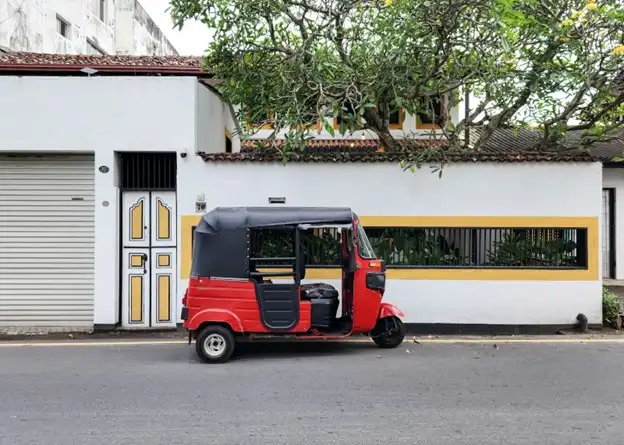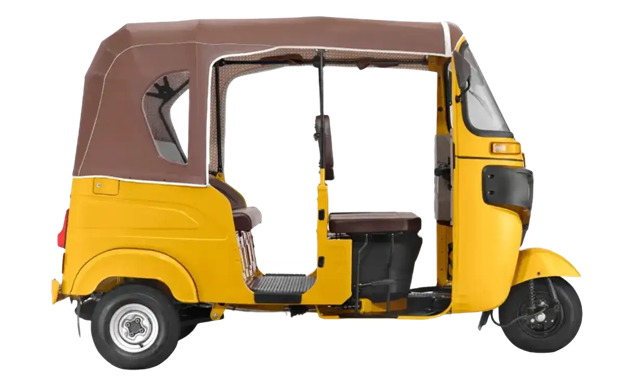
Choose your Country

Choose your Country
Last Update: July 29 2025

You hear them before you see them. The buzz through the estate. The beep around corners. In the chaos of Kenyan cities, tuk-tuks have carved out a lane of their own, fast, nimble, and always on the move.
From quick trips across Gikambura to daily hustle rides in Kisumu, tuk-tuks in Kenya have become vital to daily life. They do the work: ferrying goods, transporting passengers, and keeping the small-scale economy on wheels. That’s where Bajaj Tuk-tuks bring their A game.
Bajaj tuk-tuks aren’t here to just move with the city; they help move the city forward. They’re here to deliver, and with urbanisation on the rise, their importance is only growing.
Not everyone owns a car. Not every matatu reaches the doorstep. But tuk-tuks? They go the distance right into neighbourhoods, estates, and informal settlements.
Their agility makes them ideal for last-mile connections. They save time, reduce walking fatigue, and allow city dwellers to run errands, commute to work, and make appointments without the hassle.
They’re also faster than traditional options in congested areas. And with more Kenyans embracing convenience-first lifestyles, the demand for short-hop travel has never been higher.
More importantly, they offer employment. From Kisii to Kitengela, thousands rely on tuk-tuks to earn a daily wage. They're affordable to operate, easy to learn, and quick to monetise. For young entrepreneurs and women entering the mobility space, tuk-tuks provide a low-barrier, high-reward entry point to self-reliance.
Kenyan riders know what they want: a machine that works as hard as they do.
Fortunately, Bajaj has listened.
These three-wheelers are designed for reliability, featuring a strong build, efficient fuel usage and low maintenance. They’re not flashy, they’re dependable. And that matters when your vehicle is also your business partner. Bajaj tuk-tuks deliver the daily mileage without draining your finances or wasting time in garages.
Drivers also appreciate the easy availability of spare parts and the straightforward mechanics that don’t require advanced skills to fix. That’s less time spent waiting and more time spent earning.

For those serious about performance and dependability, the Bajaj RE 4S Petrol three-wheeler is a game changer!
With a durable build and high-torque engine, it’s engineered to endure the stop-start nature of city driving and the rough patches that define many urban roads.
Key features include:
The Bajaj RE offers versatility, comfort, and economy in one sharp-looking unit that serves passengers with its versatile usage.
This model continues to lead the way for those entering the transport business or diversifying their logistics solutions.
Need to move goods? Offer school runs? Operate a mobile kiosk?
A Bajaj tuk-tuk adapts to fit the job. The cargo bay converts into delivery compartments, shaded passenger cabins, or custom installations for unique trades. This flexibility fuels innovation.
On the other hand, small business owners, from caterers to couriers, are turning tuk-tuks into mobile HQs. And with delivery demand climbing, especially in the e-commerce space, they’re proving to be the smart choice: light on fuel, easy to park, and built for the last stretch of every journey.
Kenya's roads demand respect. Thankfully, Bajaj tuk-tuks come prepared:
These features reduce downtime and keep operations running. Whether it’s potholes in Githurai or gravel tracks in Bungoma, these machines stay the course.
And when it comes to the price of a tuk-tuk in Kenya, Bajaj continues to offer unmatched value for money.
With an extensive dealer and service network, help is never far away. From parts and repairs to advice and upgrades, Bajaj ensures you're supported every kilometre of the way.
Bajaj's presence across both urban and peri-urban areas means that whether you're operating from Nairobi or Naivasha, you won’t be left stranded.
As cities grow, so will the demand for flexible, affordable mobility and tuk-tuks already fit that gap perfectly!
County governments are beginning to create space for them—designated parking, simplified licensing, and inclusion in transport planning. It’s a sign of their growing importance. And with Bajaj exploring cleaner energy models and even smarter designs, the tuk-tuk isn’t just here to stay. It’s here to evolve the entire automotive industry.
Urban mobility will rely more on compact and sustainable transport, and tuk-tuks are perfectly positioned to be part of that change.
In Kenya’s evolving transport ecosystem, tuk-tuks stand as a necessity today. Both for passengers and business owners. Bajaj tuk-tuks, in particular, offer the strength, efficiency, and reliability required to keep this wheel of progress spinning.
So, would you like to be a part of this progress? Contact us to get started!
1. What is the average price of a tuk-tuk in Kenya?
Prices vary by model and region, but Bajaj offers some of the most competitive options in the market. Check the Bajaj website for updates.
2. Can a Bajaj tuk-tuk be used for delivery services?
Absolutely. Bajaj three-wheelers are frequently customised for cargo, courier, and vendor services.
3. Are spare parts readily available in Kenya?
Yes. Bajaj has an extensive service network and availability of genuine spare parts across Kenya.
4. Is financing available for buying a tuk-tuk?
Many Bajaj dealerships partner with local financiers to offer accessible payment plans for tuk-tuk buyers.
One Bike, Many Jobs: How Boxer Supports Everything from Boda Boda to Agro-Deliveries
Know More
Powering Small Businesses: How Tuktuks are Driving Entrepreneurship in Nairobi and Western Kenya
Know More
The Backbone of the Rift Valley: How Motorcycles Empower Rural Kenya
Know More
5 Common Mistakes That Shorten Your Boxer’s Lifespan (And How to Avoid Them)
Know More
How the 5-Speed Gearbox Gives Boxer Riders a Real Edge in Kenya
Know More
From Shock Absorption to Frame Strength: A Deep Dive into Boxer 150 X’s Tough Build
Know More
Heavy-Duty Power for Heavy-Duty Tasks: Why the Bajaj Boxer 150 HD is a Game-Changer
Know More
How Bajaj Bikes Drive Economic Development in Kenya
Know More
Why Small Business Owners Trust the Boxer 125 HD
Know More
Maintaining Your Tuk-tuk in Kenya: Essential Tips for Longevity and Efficiency Across Regions
Know More
From 100cc to 150cc: How to Choose the Best Bajaj Boxer Range for You?
Know More
Why Tuktuks Are the Smartest Way to Deliver in Kenya’s Towns
Know More
Power That Pays Off: Why the Boxer 125 HD Is Your True Income Enabler
Know More
Understanding How the Bajaj Boxer Masters Challenging Conditions
Know More
Bajaj Boxer 100 HD ES: The Flexible Performer for Everyday Business
Know More
Mastering Your Bajaj Boxer: A Rider’s Guide to Enhanced Performance
Know More
Boxer HD Series Breakdown: Which Model Fits Your Hustle?
Know More
The Tuktuk Experience: Why Tuktuks Are Kenya’s Smartest Urban Transport Tool
Know More
The Only Bike You’ll Ever Need: How Bajaj Boxer Adapts to Any Job in Kenya
Know More
Boxer 100cc Series: The Smart Pick for Reliable, Everyday Power
Know More
Why the Boxer 125 Is the Smartest Bike for Kenya’s Boda Boda Business
Know More
Ride Rough, Stay Steady: Boxer’s Suspension System Explained
Know More
Mastering the Metropolis: Selecting the Right Motorbike for Urban Utilities
Know More
The Bajaj 150 X: The Perfect Load Carrier for Rough Roads and Long Rides
Know More
From Thika Roads to Maasai Mara Trails: Bajaj Motorcycles, Kenya's Reliable Workhorse
Know More
The Social Impact of Motorcycles in Western Kenya's Communities
Know More
Navigating Nairobi's Urban Pulse: Why Bajaj Motorcycles Are the City Rider's Choice
Know More
Why Every Delivery Rider in Town Should Be Eyeing the Boxer 125 HD
Know More
Buying a Motorcycle in Nairobi? Your Guide to Making a Smart Selection
Know More
Why the Bajaj Boxer Motorcycle is the Undisputed King of Tough Terrains
Know More
From Nairobi's Hustle to Rural Paths: The Bajaj Boxer, Kenya's Unsung Hero
Know More
Powering the Rift Valley: Why the Boxer 150cc is the Go-To for Kenyan Farmers and Traders
Know More
Which Bajaj Motorcycle is Right for Your Business in Kenya? A Comprehensive Buyer's Guide
Know More
Bajaj Three-Wheelers in Kenya: Driving Business Growth and Mobility
Know More
Bajaj vs. Competitors: Why Bajaj Dominates the Kenyan Motorcycle Market
Know More
Fuel Efficiency and Durability: The Bajaj Advantage for Kenyan Riders
Know More
Maximising Your Boxer 150's Performance and Longevity: Essential Tips
Know More
Bajaj Boxer 125 vs. Competitors: A Head-to-Head Battle for the 125cc Crown
Know More
Second-Hand vs. Brand New Bikes in Kenya: Which One Should You Buy?
Know More
A Deep Dive into the Bajaj Boxer 100 HD ES Comfort Features
Know More
Why Every Smart Driver is Upgrading to the New Bajaj RE 4S Petrol
Know More
Built to Outlast the Daily Hustle: The New RE’s Frame, Finish, and Features
Know More
Ride-Hailing at Scale? Here’s Why the RE 4S is the Backbone You Need
Know More
5 Reasons Ride-Hailing Fleets Should Switch to the New Bajaj RE 4S
Know More
5 Reasons Why Boxer Is the Best Mototaxi Bike in Kenya
Know More
What’s the Ideal Boxer Model for You? A Buyer’s Guide
Know More
A Beginner’s Guide to Boxer Motorcycle Servicing
Know More
Your First Bike? Here’s Why Boxer Is the Right Choice
Know More
Types of Motorbikes in Kenya: A Complete Guide for Buyers
Know More
How to Maintain Your Boxer Motorbike for Long-Term Use
Know More
The Economic Impact of Boxer Bikes on Village Mobility
Know More
What Makes Boxer Bikes Ideal for Agricultural Transport?
Know More
Boxer 100 Series: The Best Motorcycles for Light Commercial Use
Know More
Best Boxer Bike in Kenya for Rural Transport in 2025
Know More
Exploring the Durability of Boxer Bikes on Kenyan Roads
Know More
How Boxer Bikes Help Small Business Owners in Kenya
Know More
Why Boxer 100 HD Is the Most Fuel-Efficient Utility Bike
Know More
Why Boxer 100 HD ES Is Perfect for City and Village Use
Know More
Boxer 100 HD ES: Durability, Comfort, and Performance Combined
Know More
Maintenance Tips to Keep Your Bajaj Boxer 125 HD Running Strong
Know More
Why Mototaxi Drivers Prefer Boxer 100 KS
Know More
Choosing Between Boxer 100 KS and Boxer 100 HD: A Practical Guide
Know More
Same Spirit, Two Styles: Exploring the Boxer 100 KS and HD ES
Know More
The Boxer 100 KS: Affordable Mobility for First-Time Buyers
Know More
The Boxer 125 X: A Flexible Workhorse for All Terrains
Know More
How the Boxer 125 X Offers Flexibility for Small Businesses
Know More
How Boxer 150 HD Handles Load Like a Pro
Know More
Why the Boxer 150 HD Is a Status Symbol in Transport Circles
Know More
How Boxer 150 X Helps Mototaxi Operators Maximise Earnings
Know More
Top Features That Define the Boxer Motorcycle
Know More
The Champion of Rough Roads: Boxer 150 X Review
Know More
Why the Boxer 150 X Dominates Africa’s Toughest Terrains
Know More
How Boxer Bikes Are Powering Kenya’s Economy
Know More
Getting to Know the Heavy Duty Boxer 150cc Range: Features and Benefits
Know More
Bajaj Boxer for Heavy-Duty Tasks: Rugged, Reliable, and Ready to Roll
Know More
Boxer 150 HD: Built Tough for Long Routes and Heavy Loads
Know More
Boxer 150 HD Maintenance Tips for Rural Riders
Know More
Value Meets Reliability: Why Bajaj Bikes Are Perfect for Kenyan Roads
Know More
5 Reasons the Boxer 150 X Is Built for Boda Boda
Know More